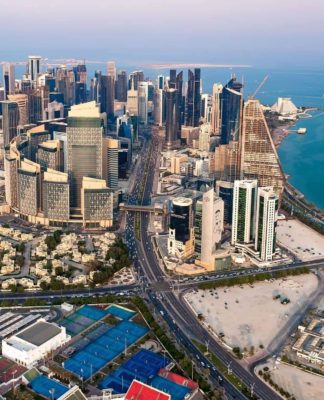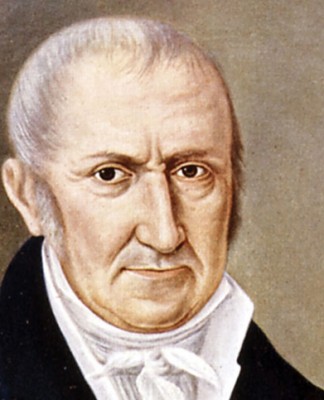QNB Report: Expectations that most of the causes of the global slowdown will change in 2023
December 23, 2022, 07:00am
Follow us:
alsharq
Distinguished presence and exclusive events for QNB Group in the Qatar World Cup
A+
A-
QNBWeekly economic analysisInternational EconomyEmerging markets
QNB’s economic team said in its weekly economic analysis that the current year, which is nearing completion, started positively for the global economy, as market sentiment was good, with continued recovery from the worst stages of the pandemic, indicating another round of strong performance in the main developed economies and some emerging markets.
Read also
QNB.. a distinguished presence and exclusive events in the FIFA World Cup 2022™️
QNB: An advanced digital banking experience with a wide range of services
A report by QNB: An expected rise in oil prices in the coming period
The report indicated that Bloomberg’s expectations at the beginning of the year were to achieve strong global growth of 4.4% in 2022. However, global conditions took a dramatic turn for the worse early in the year, as the policy of zero Covid cases applied in China led to large closures in the country. . The Russian-Ukrainian conflict added more complexity to the overall situation, with bottlenecks in the energy and food supply chains. This accelerated the escalation of inflation, which was already high in most advanced economies. To address rising inflation, work has begun around the world to reverse the ultra-loose monetary policy measures taken during the pandemic. As a result, growth expectations were repeatedly lowered and inflation expectations were raised, resulting in a rare macroeconomic shock not seen since the 1970s.
Big setback
Achieving global growth of 2.9% in 2022 is a significant setback, especially given both the initial growth forecast of 4.4% and the long-term average growth of 3.4%. It should be noted that the weak performance in the current year halted the strong recovery that we witnessed in the second half of 2020 and in 2021, and this puts the global economy at a level 5% below the economic trend that prevailed before the pandemic. The deterioration was widespread, affecting all major economies, including the United States, the eurozone and China.
main events
The analysis indicates that it is in the main events of 2022 that caused these downgrades to global growth forecasts. Starting in China at the beginning of the year, the wave of COVID-19 cases caused by the Omicron variant required the implementation of strict lockdowns and extensive social distancing measures to curb the spread of the virus under the zero COVID policy. This has included imposing unprecedented lockdowns on millions of people in major Chinese cities for nearly two months and severe restrictions on movement in other regions. The closures covered regions that produce 40% of China’s gross domestic product and account for 80% of its exports. Restricting bank lending despite a high money supply, clampdown on the heavily indebted real estate sector, as well as tough regulations on the technology industry have led to the country’s sharpest economic slowdown in more than 30 years.
Lockdowns in China have compounded the supply chain shortages that have emerged during the pandemic around the world. New consumer behaviors in the midst of the pandemic and direct household remittances led to a temporary surge in demand for manufacturing products that turned into excess demand for goods when supply was constrained.
The Russia-Ukraine conflict has further disrupted the commodity market by putting additional pressure on prices when inventories are at historically low levels. As a result, energy and food prices have skyrocketed. Brent crude oil prices have averaged $100 per barrel for the year, the highest in a decade and close to the record levels seen in 2011 and 2012. Embargoes, sanctions and boycotts disrupted the flow of Russian gas to Europe, triggering an energy crisis that is starting to cause a recessionary environment in parts of the continent. At the same time, inflation unexpectedly reached multi-decade highs in the US and the Eurozone.
Rising prices have reduced disposable income and forced central banks to act tougher to offset the accommodative approach adopted since the pandemic, when monetary policies were maintained largely accommodative even at the first signs of price acceleration. The US Federal Reserve engaged in a hawkish stance on monetary policy and raised interest rates seven times, raising the federal funds rate from 0-0.25% to 4.25-4.5%. Similarly, the European Central Bank raised interest rates four times, taking the discount rate out of negative territory for the first time in seven years to 2%. Moreover, after a decade-long period of liquidity injections and quantitative easing, both the Fed and the European Central Bank have tightened or even re-tightened their balance sheet management approach.
The tightening of financial conditions in the context of rising global debt levels has led to a decrease in credit expansion, impeding access to capital, consumption and investment, negatively impacting economic activity.
Overall, despite a promising start, 2022 was dominated by macro challenges and led to sub-optimal global growth. However, it is hoped that most of the causes of the global slowdown in 2023 will moderate or change, including the lockdown in China, ongoing supply chain restrictions, rising commodity prices, accelerating inflation, and tightening central bank policies.






























